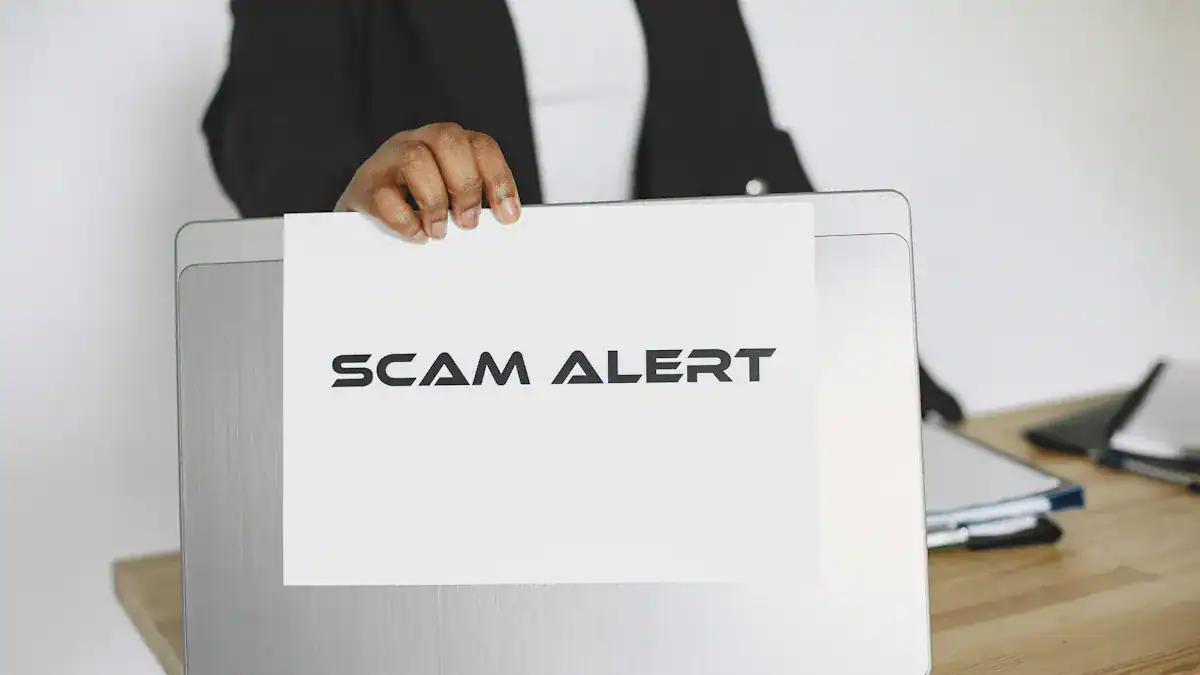Maintaining your website is essential to keeping it secure and functional. Neglecting routine upkeep can expose your site to vulnerabilities, leading to data breaches or downtime. Proactive maintenance offers several benefits: it strengthens security, ensures compliance with industry standards, and enhances user trust. Regular updates also prevent costly repairs and reflect professionalism. Using a reliable website maintenance checklist can simplify this process and help you stay on track. By prioritizing maintenance, you protect your data, improve performance, and provide a better experience for visitors.
Key Takeaways
Update your website’s software often to fix problems and stay safe. This helps protect your data and your users.
Back up your website regularly to avoid losing important data. A good backup system helps you recover quickly from attacks or crashes.
Check and fix broken links to make your site better for users. Regular checks keep your website working well and trustworthy.
Run security scans to find and fix weak spots. Scans lower risks and help meet safety rules.
Improve your website’s speed to keep it safe and user-friendly. Fast websites are harder to hack and rank higher on search engines.
1. Regular Software Updates

Keeping your website’s software updated is one of the most effective ways to prevent security breaches. Outdated software often contains vulnerabilities that hackers exploit. Regular updates ensure your website remains secure, functional, and compatible with the latest technologies.
Importance of Updates
Software updates are essential for fixing vulnerabilities and improving security. Each update strengthens your website’s defenses, reducing the risk of unauthorized access.
Updates patch known security flaws, making it harder for attackers to exploit your system.
Agencies like CISA recommend addressing vulnerabilities immediately to enhance cybersecurity resilience.
A secure website depends on the strength of its individual components, which regular updates reinforce.
Consider this: the longer you delay updates, the larger the window of opportunity for cyberattacks. Staying proactive protects your data and your users.
How to Update Software
Updating your website’s software doesn’t have to be complicated. Start by identifying all the components that require updates, such as your content management system (CMS), plugins, and themes.
Follow these steps:
Log in to your CMS dashboard and check for available updates.
Back up your website before applying any updates to avoid data loss.
Apply updates one at a time, testing your website after each update to ensure everything works correctly.
Many CMS platforms, like WordPress, offer automatic update options. Enabling this feature can save time and reduce the risk of forgetting critical updates.
Scheduling Updates
Consistency is key when it comes to software updates. Create a schedule to review and apply updates regularly.
Monitor your website weekly for new updates.
Set reminders to perform updates during low-traffic hours to minimize disruptions.
Assign responsibility to a team member or use a website maintenance checklist to stay organized.
Best practices include regular monitoring, clear communication with stakeholders, and continuous improvement of your update process. These steps ensure your website remains secure and up-to-date.
By prioritizing software updates, you protect your website from vulnerabilities and maintain a safe environment for your users.
2. Backup Your Website Frequently
Backing up your website is one of the most critical steps in protecting it from data loss. A reliable backup system ensures you can recover your website quickly after a cyberattack, server failure, or accidental deletion.
Why Backups Matter
In today’s digital world, cyber threats are more sophisticated than ever. Backups act as a safety net, allowing you to restore your website and minimize downtime. Without backups, you risk losing sensitive data, facing prolonged outages, and damaging your reputation.
In 2017, the WannaCry ransomware attack affected over 200,000 computers worldwide. Organizations with robust backup systems restored their data without paying a ransom, while others faced significant downtime and data loss.
A study revealed that 45% of organizations experienced permanent data loss due to inadequate backups. This highlights the importance of having a robust backup strategy as part of your website maintenance checklist.
Setting Up Backups
Setting up backups doesn’t have to be complicated. Follow these steps to ensure your website data is protected:
Choose a Backup Solution: Use tools like UpdraftPlus, BackupBuddy, or your hosting provider’s built-in backup service.
Schedule Regular Backups: Automate backups daily or weekly to ensure you always have the latest version of your website.
Test Your Backups: Periodically test your backups to confirm they work correctly and can be restored when needed.
Tip: Use a combination of full and incremental backups. Full backups save all your data, while incremental backups only save changes made since the last backup, saving time and storage space.
Storing Backups Securely
Storing backups securely is just as important as creating them. Cybercriminals often target backup files, so you must protect them from unauthorized access.
Storage Option | Benefits |
|---|---|
Cloud Storage | Accessible from anywhere, encrypted for security. |
External Hard Drives | Offline storage, safe from online threats. |
Remote Servers | Redundant storage for added reliability. |
In 2023, small businesses faced an average cost of $3.31 million due to data breaches. However, 85% of organizations that stored backups securely managed to recover their data without paying a ransom. This underscores the importance of safeguarding your backups to avoid financial losses.
By implementing a strong backup strategy and storing your data securely, you can protect your website from unexpected disasters and ensure business continuity.
3. Monitor and Fix Broken Links
Broken links can harm your website’s performance and reputation. Monitoring and fixing them regularly ensures a seamless user experience and maintains your site’s credibility.
Impact of Broken Links
Broken links disrupt your website’s functionality and negatively affect user engagement. Here’s how they impact your site:
Negative User Experience: Visitors encountering broken links may feel frustrated, leading to higher bounce rates.
Decreased Crawlability: Search engine bots struggle to index your site when broken links exist, reducing your visibility.
Loss of Link Juice: Broken links block the flow of ranking power, which can lower your website’s authority.
Impacted Website Authority: A site with broken links appears unreliable, damaging its reputation.
Fixing broken links improves user satisfaction and ensures search engines can properly index your content.
Tools for Link Monitoring
Using the right tools simplifies the process of identifying and fixing broken links. Here are some effective methods and tools:
Tool/Method | Description | Performance Metrics |
|---|---|---|
Monitors input variables to detect anomalies. | Identifies patterns in link performance. | |
CUSUM | Tracks cumulative changes in link behavior. | Measures deviations from expected norms. |
EWMA | Uses weighted averages to monitor link trends. | Highlights gradual performance shifts. |
Hotelling’s T2 | Analyzes relationships between multiple variables, including link health. | Detects multivariate issues. |
These tools help you stay proactive in maintaining your website’s integrity.
Conducting Link Audits
Regular link audits are essential for identifying and resolving broken links. They also enhance your website’s overall performance.
Audits uncover issues like slow load times, outdated content, and broken links that hinder your site’s functionality.
Fixing these problems ensures your site complies with SEO best practices, improving visibility and competitiveness.
Addressing technical issues like broken links boosts user experience and search engine rankings.
Tip: Schedule link audits quarterly to keep your website in top shape. Use tools like Google Search Console or Screaming Frog to streamline the process.
By monitoring and fixing broken links, you protect your website’s reputation and provide a better experience for your visitors.
4. Perform Security Scans

Regular security scans are essential for identifying and addressing vulnerabilities in your website. They help you stay ahead of potential threats and maintain a secure online presence.
Benefits of Security Scans
Security scans offer several advantages that protect your website and data:
Risk Reduction: Scans identify weak points and secure sensitive data, lowering the chances of breaches.
Regulatory Compliance: They ensure your website meets standards like GDPR or HIPAA, avoiding legal issues.
Enhanced Visibility: Scans provide insights into your website’s data and security, helping you make informed decisions.
Cost Savings: Preventing breaches saves money on fines, recovery, and downtime.
Increased Security: By classifying data, you can apply the right security measures effectively.
Organizations with structured vulnerability assessments experience fewer incidents. Regular scans also improve your website maintenance checklist by prioritizing risks and strengthening your security posture.
Tools for Scanning
Choosing the right tools simplifies the scanning process and ensures accurate results. Some effective tools include:
Invicti: This tool uses Proof-Based Scanning to confirm vulnerabilities with over 99.98% accuracy. It reduces false positives and eliminates the need for manual verification.
Nessus: Known for its comprehensive vulnerability assessments, Nessus helps you identify and fix security gaps.
Qualys: This cloud-based tool offers scalable scanning solutions for websites of all sizes.
Invicti’s approach stands out because it safely exploits vulnerabilities to prove their existence. This method allows you to automate and scale security testing efficiently.
Addressing Vulnerabilities
After identifying vulnerabilities, take immediate action to fix them. Follow these steps:
Prioritize Risks: Focus on high-risk vulnerabilities that could cause the most damage.
Apply Patches: Update software, plugins, and themes to close security gaps.
Monitor Progress: Use your scanning tools to verify that fixes are effective.
Regular scans and prompt action protect your website from evolving threats. Incorporating security scans into your website maintenance checklist ensures a safer environment for your users.
5. Optimize Website Performance
Performance and Security
Optimizing your website’s performance does more than improve speed—it also strengthens security. A well-performing site is less vulnerable to cyber threats like malware and unauthorized redirection. Studies show that 98% of web applications are at risk due to malware, while 72% face vulnerabilities from coding flaws. By addressing these issues, you reduce the chances of a breach.
To enhance both performance and security, consider these steps:
Encrypt your website’s data to protect user privacy.
Use a Web Application Firewall (WAF) to monitor traffic and block unauthorized access.
Regularly update and test your system to stay ahead of evolving threats.
These measures not only safeguard your site but also create a seamless experience for your visitors.
Improving Speed
A fast-loading website keeps users engaged and improves search engine rankings. Slow sites frustrate visitors, leading to higher bounce rates. You can boost speed by implementing proven strategies:
Optimize images: Compress images to reduce file sizes without sacrificing quality.
Leverage caching: Store copies of files for quicker access, reducing load times.
Use a Content Delivery Network (CDN): CDNs distribute content across multiple servers, ensuring faster delivery to users worldwide.
Additionally, adopting HTTPS enhances security and builds user trust. Faster loading speeds also improve dwell time, positively impacting your site’s SEO and return on investment.
Monitoring Performance
Regularly monitoring your website’s performance ensures your optimization efforts are effective. Tools like Core Web Vitals (CWV) measure key metrics such as speed, interactivity, and visual stability. These insights help you identify areas for improvement.
Measurement Feature | Description |
|---|---|
Core Web Vitals (CWV) | Tracks page experience metrics like speed and interactivity. |
DNS Performance | Monitors query response times and nameserver health. |
Network Performance | Evaluates latency and throughput for CDN and third-party services. |
By using these tools, you can maintain a high-performing website that delivers a secure and satisfying experience for your users.
Regular website maintenance is essential for protecting your site from security breaches and ensuring smooth performance. By implementing these five tasks, you safeguard sensitive data, enhance user trust, and improve overall functionality.
For instance, an e-commerce site using FatLab’s WordPress support services benefits from regular updates to its WooCommerce plugin and SSL certificates. This ensures secure customer transactions at all times.
Neglecting maintenance can lead to costly mistakes. Jane, an online boutique owner, learned this the hard way when an untested plugin update disrupted her store. Her business faced two days of downtime, refunds, and frustrated customers.
To avoid such scenarios, follow a website maintenance checklist. Include weekly backups, monthly plugin updates, and quarterly performance optimizations. These steps keep your website secure and efficient. Take action today or consult a professional to ensure your site remains in top shape.
FAQ
What is the best frequency for website maintenance?
You should perform website maintenance tasks weekly, monthly, and quarterly. Weekly tasks include backups and updates. Monthly tasks involve security scans and performance checks. Quarterly, you should conduct link audits and review your overall strategy.
Tip: Create a maintenance calendar to stay consistent.
Can I automate website maintenance tasks?
Yes, you can automate many tasks like backups, software updates, and security scans. Use tools like UpdraftPlus for backups or WordPress auto-updates. Automation saves time and ensures critical tasks are not overlooked.
Note: Always test automated processes to ensure they work correctly.
How do I know if my website has security vulnerabilities?
Run regular security scans using tools like Invicti or Nessus. These tools identify weak points in your website. You can also monitor unusual activity, such as unexpected login attempts or changes to your files.
Reminder: Address vulnerabilities immediately to prevent breaches.
What should I do if my website gets hacked?
If your website is hacked, take these steps:
Take it offline to prevent further damage.
Restore it using a clean backup.
Identify and fix the vulnerability.
Pro Tip: Consult a cybersecurity expert for advanced recovery.
Why is website speed important for security?
A slow website can be more vulnerable to attacks like malware or DDoS. Optimizing speed reduces these risks and improves user experience. Use caching, image compression, and a CDN to enhance performance.
Emoji Tip: 🚀 Faster websites = Happier users + Better security!
Founder, Managing Partner of Jazzy Marketing.
My first foray into the web was back in 2001 when we needed to get a website build for a telecom venture I was working for. I was given the project of getting our website built with e-commerce integration for calling cards – a huge market at the time. Well, that was the spark that got me interested in website development and I have not looked back since.




